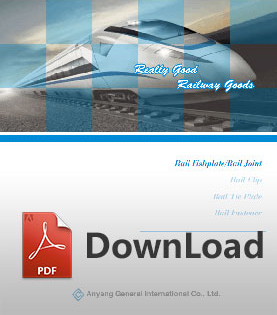How to install Glued insulated rail joint?
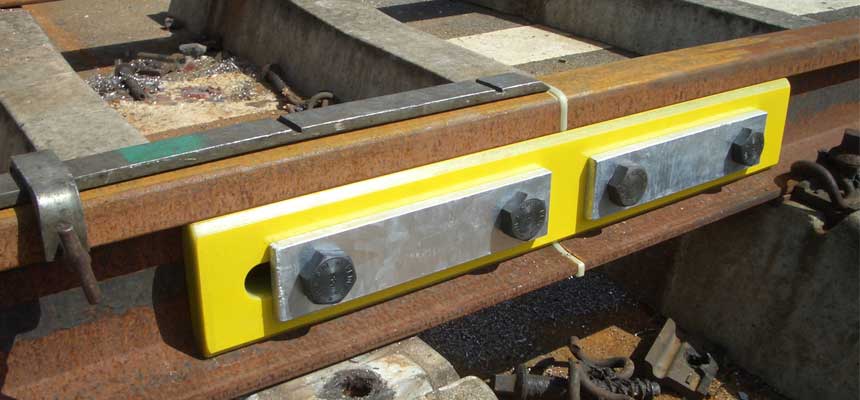
The glued insulated rail joint refers to the rail joint bar that use the special binder and insulated cloth to connect steel rail and rail fish plate. Glued insulated rail joint has features of high strength, good insulation, long service life, less maintenance, and reliability, etc. It is usually applied to continuously welded rail track.
Rail joint, also known as rail fish plate, is used to connect two ends of rails. Common types of rail joint include common rail joint, compromise joint bar. Insulated rail joint is used to insulate the rail of the track circuit. Glued insulated rail joint is one kind of insulated rail joint.
Application of glued insulated rail joint
- Replacing regular cleat insulator with glued cleat insulator
- Glued cleat insulator has been torn down or damage
- The insulating property of glued cleat insulator is not good
Standard and quality of glued insulated rail joint
- For the line whose speed is no more than 200km/h, the distance between glued insulated rail joint and soldered joint is over 3m; for the line whose speed is over 200km/h, the distance between glued insulated rail joint and soldered joint is over 6m.
- Rail ends and bolt holes should be chamfered so that they are burr-free, oil-free, moisture-free, and smooth. Insulating end surface should be on the same level with rail surface.
- On the insulated joint, the vertical direction of the rail surface should not have indentation, examining with a 1m ruler. For the line whose speed is no more than 200km/h, the maximum vertical deviation of the rail surface should not exceed 0.3mm, and the maximum horizontal deviation of railhead side working edge should not be more than ± 0.3mm. For the line whose speed is over 200km/h, the maximum vertical deviation of the rail surface should not exceed 0.2mm, and the maximum horizontal deviation of railhead side working edge should not be more than ± 0.2mm.
- Checking the rail insulated joint and insulation resistance together with signaling & telecommunication department. On the condition of normal temperature and cutting down the rail circuit: on dry state, using an ammeter of 500 mge to measure a resistance of value over 10 mge; on damp state, watering 5000mL water on the end plate and using a multimeter to measure a resistance value over 1000 ohm.
- The field operation of glue joint should be done on the condition that temperature is above 12 ℃, humidity is less than 60%, and the rail temperature is below 35 ℃. It is not allowed to conduct the glue join operation on rainy and foggy days without special protective equipment.
Procedures and main points
-
Preparation of machinery and material
- Prepare electric generator, angle grinner, rail saw, drilling machine, bolt wrench etc.
- Prepare qualified glued cleat insulator, bolts, insulating material, cement etc.
-
Connection and safeguard
Forty minutes (sixty minutes for high-speed rail) early before the operation, station liaison officers get in touch with the station attendant and register it. After the dispatching order is given, they inform the person in charge of operation to place the protective equipment by rules
-
Operation preparation
- Before the operation, the line within the range of 20 meters from the joint should be renovated so that it can achieve operation acceptance standard: Rail and fastenings are in good condition, the space between sleepers are in line with the provisions, and there is no loose sleeper.
- There should be no hard bending within 1m range of glued insulated joint rail and no damage on the surface of the rail.
- When using the reusable rail, ultrasonic examination is necessary to ensure that there is no damage inside.
-
Preparation of the rail
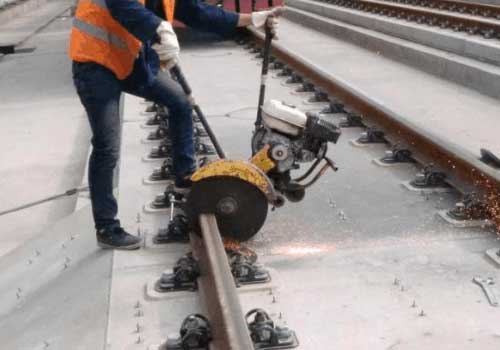
- Try to use one saw blade when cutting the insulated rail, and vertical deviation and horizontal deviation does not exceed 0.15mm. The rag on the rail should be polished by the angle grinder to prevent it break the end surface.
- Drill holes on both sides of the joint. After drilling, use the model to check the space of rail bolt holes. If there is deviation of the space, electric grinding unit will be used to expand the holes to ensure that the bolts can freely penetrate through the holes.
- Glued joint rail end and screw holes should be chamfering. The chamfer size is 1-2mm and the chamfer angle is 45°
-
Polishing and rust cleaning
Use wire brush and flat spade to clean greasy filth and rust within the range of glued joint. Use carbon tetrachloride to clean oil stain. Polish both sides of the glued joint for 60cm so that the rail can have metallic luster. The carved characters on the range of the glued joint should be smooth. After polishing, scrap iron should be clean to make the coating of glue easier.
-
Drying treatment
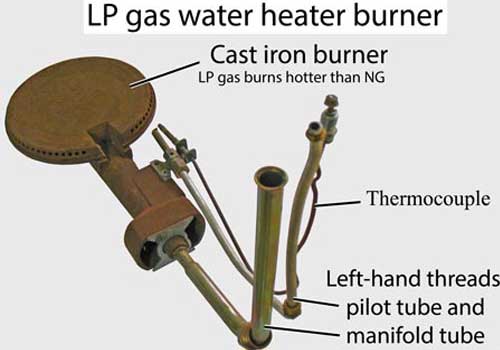
For example, petrol burner and propane gas should be used to roast the rail and cleat insulator in order to remove the moisture on rainy days. Operation on rainy days need measures to shelter.
-
Rail alignment
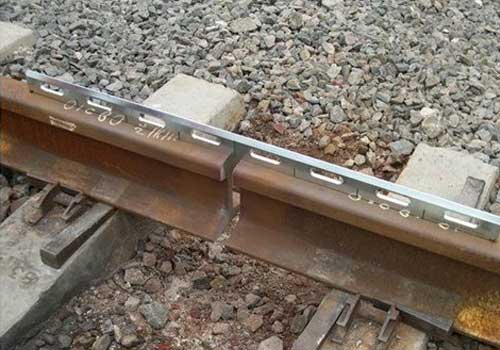
Use a 1m rule to check the straightness and use a buster to adjust t the rail. After the adjustment, the straightness of rail should meet the following requirement: rail top 0-0.3mm, no indentation, side working edge ±0.3mm.
-
Pre-installation
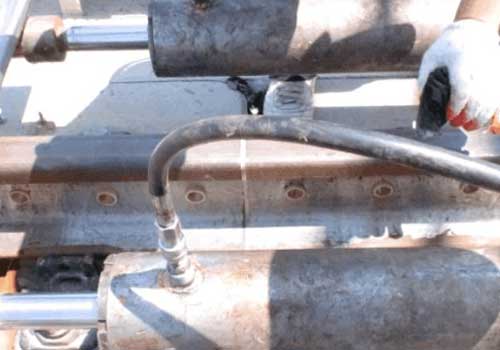
- The main function of pre-installation is to reexamine the bolt holes to ensure the successful installation and cementing of insulated joint, the right direction of installation. If the pre-installation is not successful, the bolt holes should be fixed.
- The thickness of insulated patch is 6mm. For the rail gap which is more than or less than 6mm, the stretcher must be used to ensure the rail can clamp the insulated end face.
- The insulated patch must be slightly higher than the rail top surface. There should be no gap between the insulated end face and the rail; otherwise, it would cause insulation failure because of the flowing of rain into the gap.
- Carefully clean scrap iron and dust on the insulated patch with the brush to prevent short circuit.
-
Compounding of plaster
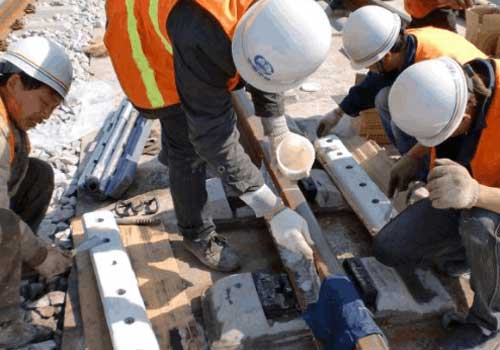
When compound plaster, moisture must be kept away. After the pre-installation of the cleat insulator is done, the plaster can be open and stirred. Use the stirred plaster at once. Stir or compound the plaster must conduct in shade place when the sunlight is too strong.
-
Installation of insulated rail joint
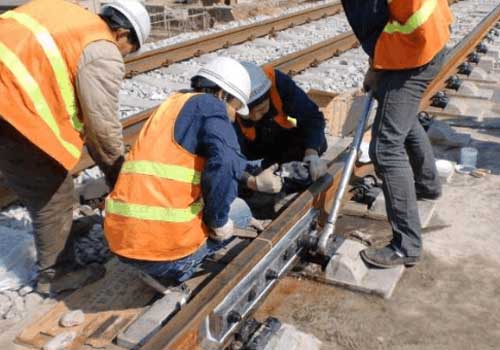
- Coat the plaster on the dry internal surface of insulated rail joint, and make the plaster wedge-shape with am oil paint shovel. Press the plaster on the cleat insulator slowly in case that it drops out. The dropped plaster should not be used again.
- Check whether the insulated gum sleeve is installed or fall off when closing the cleat insulator.
- After the railway fish plate has installed, the bolt should be ready, and it should be tightened to touch the shim. Use a spanner to clamp the bolt to ensure that it does not move. Then use the torque wrench to fasten the bolt from the inside out to 1400N m, and use the hammer to knock on the bolt. Wipe out the excessive plaster. After the plaster become dry and hard, it is necessary to tighten the bolt again. The end surface which is higher than the rail top should be grind to flat when the plaster is dry.
-
Insulating property inspection
The resistance measurement is generally after drying the daub. Measure the resistance between steel rails, rail and fish plate, fish bolt and steel rails.
-
End of installation
When project finished, inspect the project according to the accepted standard, and fill the on-spot record.
conclusion
Glued insulated rail joint installation plays a vital role in keeping safety of rail track system. Except rail joint, there are a lot of railroad fasteners for rail track construction, such as rail clip, rail bolt, railroad tie plate, railroad spike, etc.You may also like:
- Insulated rail joint review
- Compromise joint bars for sale
- Failure Causes Analytics of Rail Joint
- Hot-sale Railway Fish Plates From AGICO Rail
- UIC54 and UIC60 Rail Joint Bar - Typical Railway Fishplates for Transportation
- AREMA Standard Rail Joint – 115-119RE and 132RE Rail Joint Bar in Stock
- How much do you know about the insulated rail joints ?
- Rail fishplate and rail bolt overview
- Rail Fasteners
- rail fastening system
- rail clip
- railroad spike
- Track bolt
- rail shoulders
- rail anchor
- rail clamp
- tie plate
- Rail Pad
- rail insulator
- rail plastic dowel
- other rail fasteners
- Railway Switch
- SKL series rail fastening system
- Chinese standard rail fastening system
- screw spikes
- Crane rail fastening system
- K type rail clip for Africa
- Hey-Back Rail Fastening
- rail fasteners for Mexican market
- Ss25 screw spike
- Ss35 rail sleeper screw spike
- Ss8 screw spike
- coach screw
- Crane Rail Clip
- Rail Joints (Fishplate)
- Steel Rail
- Railway Sleeper
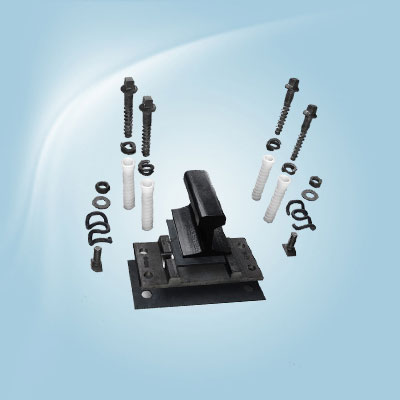 rail clip
rail clip
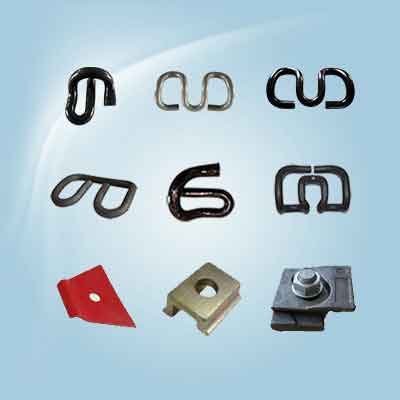 rail joints
rail joints
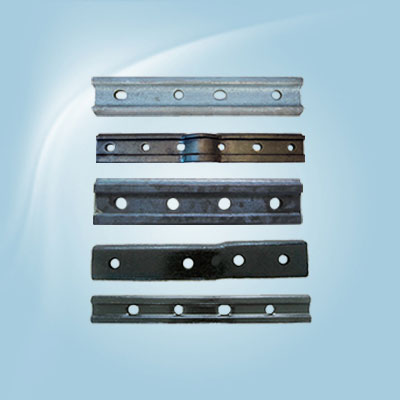
 Español
Español English
English
